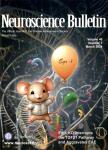Differential Inhibition of Nav1.7 and Neuropathic Pain by Hybridoma-Produced and Recombinant Monoclonal Antibodies that Target Nav1.7
Differential Inhibition of Nav1.7 and Neuropathic Pain by Hybridoma-Produced and Recombinant Monoclonal Antibodies that Target Nav1.7作者机构:Department of Anesthesiology Duke University Medical Center Department of Biochemistry Duke University Medical Center Pain Research Center Department of AnesthesiologyUniversity of Cincinnati Department of Anesthesiology Shanghai Children's Medical Center Department of Physiology and Biophysics College of Medicine Eulji University Department of Physiology College of Medicine Gachon University
出 版 物:《Neuroscience Bulletin》 (神经科学通报(英文版))
年 卷 期:2018年第34卷第1期
页 面:22-41页
核心收录:
学科分类:0710[理学-生物学] 1002[医学-临床医学] 1001[医学-基础医学(可授医学、理学学位)] 10[医学]
基 金:supported by National Institutes of Health Grants R01NS89479 R01NS045594 and ROINS055860
主 题:Primary afferent neuron Patch clamping (electrophysiology) Sodium channels Animal models
摘 要:Abstract The voltage-gated Na+ channel subtype Nav1.7 is important for pain and itch in rodents and humans. We previously showed that a Nav1.7-targeting monoclonal antibody (SVmab) reduces Na+ currents and pain and itch responses in mice. Here, we investigated whether recom- binant SVmab (rSVmab) binds to and blocks Nav1.7 similar to SVmab. ELISA tests revealed that SVmab was capable of binding to Nav1.7-expressing HEK293 cells, mouse DRG neurons, human nerve tissue, and the voltagesensor domain II of Nav1.7. In contrast, rSVmab showed no or weak binding to Nav1.7 in these tests. Patch-clamp recordings showed that SVmab, but not rSVmab, markedly inhibited Na+ currents in Nav1.7-expressing HEK293 cells. Notably, electrical field stimulation increased the blocking activity of SVmab and rSVmab in Nav1.7- expressing HEK293 cells. SVmab was more effective than rSVmab in inhibiting paclitaxel-induced mechanical allodynia. SVmab also bound to human DRG neurons and inhibited their Na+ currents. Finally, potential reasons for the differential efficacy of SVmab and rSVmab and future directions are discussed.



